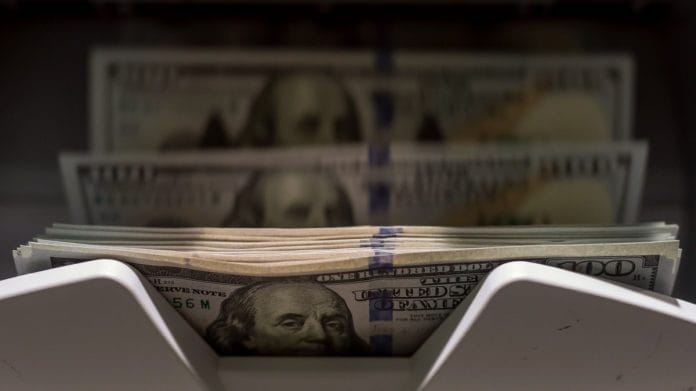New Delhi: India’s external debt rose modestly by 2.1 per cent year-on-year to USD 570 billion as of March-end 2021, notwithstanding the COVID-19 pandemic, according to the finance ministry.
External debt to GDP ratio rose marginally to 21.1 per cent from 20.6 per cent as at end-March 2020.
Reserves to external debt ratio, however, increased to 101.2 per cent from 85.6 per cent during the same period, thereby consolidating the country’s position as a net creditor to the world, as per the status report on India’s external debt released by the ministry.
The sovereign debt at USD 107.2 billion rose higher by 6.2 per cent over its level a year ago, mainly because of an increase in external assistance more than compensating the fall in FPI investment in government securities (G-Secs), it said.
The augmented external assistance reflected larger disbursement of COVID-19 loans from multilateral agencies during 2020-21.
The non-sovereign debt, on the other hand, grew 1.2 per cent on a yearly basis to USD 462.8 billion.
Commercial borrowings, NRI deposits and short-term trade credit account for 95 per cent of the non-sovereign debt.
While NRI deposits grew 8.7 per cent to USD 141.9 billion, commercial borrowings at USD 197.0 billion and short-term trade credit at USD 97.3 billion shrank by 0.4 per cent and 4.1 per cent, respectively.
At March-end 2021, long-term debt (with original maturity of above one year) was at USD 468.9 billion, recording an increase of USD 17.3 billion over the year-ago level.
US dollar-denominated debt remained the largest component of India’s external debt, with a share of 52.1 per cent as of March-end 2021, followed by Indian rupee (33.3 per cent), yen (5.8 per cent), SDR (4.4 per cent) and the euro (3.5 per cent).
“Over the years, policy on external debt has enabled the private sector to access foreign debt in a calibrated manner. As at end-March 2021, the level of non-sovereign debt was more than four times that of sovereign debt, compared to half as at end-March 1991,” it said.
Given its relative size, typically in a normal year, it is the relative rise in non-sovereign debt that influences the dynamics of India’s external debt, thereby supplementing domestic savings to fund larger investments as the economy expands, it said.
On the contrary, in the pandemic year, it was the relative rise in sovereign debt that accounted for a larger share in the overall growth of foreign debt (2.1 per cent), it said, adding this increase was due to the COVID-19 loans.
On the other hand, within the non-sovereign debt, the growth-sensitive commercial borrowings and import-sensitive short-term trade credit shrank. Therefore, the pandemic disrupted growth-dependent constituents, though overall external debt level rose, it added.
Also read: ‘Bad banks’ could be effective, but PSBs need better lending policies in the long run






